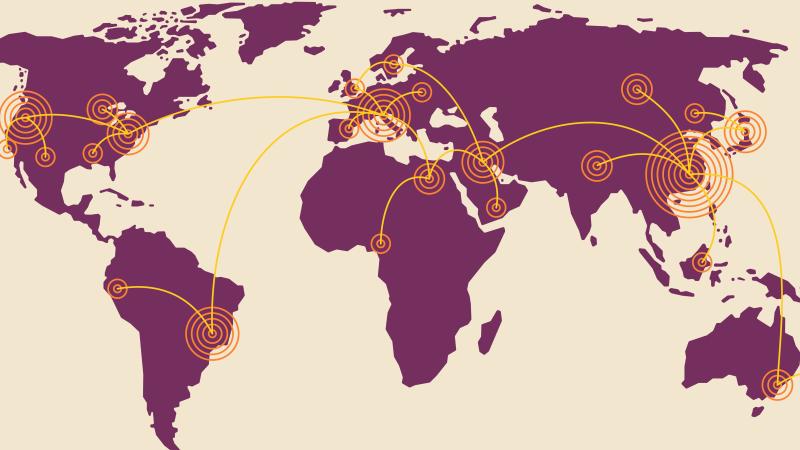Instead of physical distance, model examines closeness of countries based on disease spread
August 13, 2020

TROY, N.Y. — More strategic and coordinated travel restrictions could have reduced the spread of COVID-19 in the early stages of the pandemic, data confirms. The conclusion, available in preprint on MedRxiv, an online repository of papers that have been screened but not peer reviewed, stems from new modeling conducted by a multidisciplinary team of scientists and engineers at Rensselaer Polytechnic Institute.
The researchers evaluated the distance between countries in terms of air travel, a more complex measurement than simply mapping physical distance. For instance, while China and Thailand may be geographically more proximate to one another, if there are significantly more flights between China and the United States, the chance of disease spread may be higher.
“This is considered a global problem,” said Mamadou Diagne, an assistant professor of mechanical, aerospace, and nuclear engineering at Rensselaer, “so we wanted to know if coordinated action could be taken to mitigate contamination rates all across the world.”
By mapping and analyzing the global mobility network through air traffic patterns, the researchers were able to determine the level of connection between various nations and develop a model that can predict which countries are closer to one another in terms of disease spread. The model was able to successfully predict when the virus arrived in the United States.
Using this approach, the team examined the effectiveness of various travel restrictions countries implemented in an effort to slow the transmission of the virus that causes COVID-19.
“For example, we found that the Chinese lockdown reduced the arrival time of the virus in uninfected countries by about 11 days,” said Jianxi Gao, an assistant professor of computer science at Rensselaer. “And, it reduced the number of infections by 1 million globally.”
Travel restrictions enacted by other nations, including entry bans, global travel bans, and lockdowns, also helped to reduce the global spread. However, the Rensselaer team found that these actions could have been significantly more effective had countries worked in concert with one another.
“According to the data we collected, about 50 percent of travel restrictions were ineffective,” said Lu Zhong, a postdoctoral researcher in mechanical, aerospace, and nuclear engineering. “Because the travel restrictions were done in an uncoordinated way, they failed to contribute to the global good.”
Diagne, Gao, and Zhong found that redundant or unnecessary travel restrictions also affected the global economy. A more efficient approach, they said, could mitigate economic harm.
Researchers started this work before the COVID-19 pandemic began, though they were focused on a different disease at that time. They believe the model could be applied to future pandemics in addition to alleviating some of the ongoing effects of the current one.
The team plans to increase the model’s utility by further studying the effectiveness of local mitigation policies within the United States.